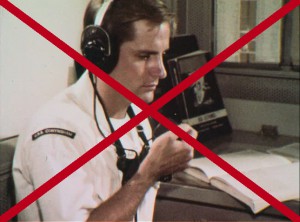Government Contractor Defense Fails to Protect Navy Contractor
By James Scadden, Oakland on January 29, 2016
The recent decision of the Supreme Court in Campbell-Ewald Co. v. Gomez (No. 14 – 857, decided Jan. 20, 2016) has garnered attention for its discussion of the role of Rule 68 offers to compromise class actions. (See opinion by Ginsburg, concurrence by Thomas and dissent by Alito here). Tucked away in the majority opinion is a discussion of the applicability of the government contractor defense for entities engaged by the US Navy to assist in developing a multimedia recruiting campaign for the Navy.
 To this writer, it has always seemed logical that manufacturers that sell equipment to the Navy pursuant to Navy specifications should have the benefit of the defense. Yet defendants have often had trouble gaining traction in asserting this defense in the courts and are frequently stymied by plaintiff arguments such as “but the Navy did not have a specification prohibiting the company from warning.” A reading of Campbell-Ewald, in our estimation does not offer defendants much encouragement.
To this writer, it has always seemed logical that manufacturers that sell equipment to the Navy pursuant to Navy specifications should have the benefit of the defense. Yet defendants have often had trouble gaining traction in asserting this defense in the courts and are frequently stymied by plaintiff arguments such as “but the Navy did not have a specification prohibiting the company from warning.” A reading of Campbell-Ewald, in our estimation does not offer defendants much encouragement.
In Campbell-Ewald, the Court determined that the government contractor had not only violated the prohibitions of the Telephone Consumer Protection Act, but had also violated express instructions of the Navy. The Court set forth the question and then answered it thusly:
Do federal contractors share the Government’s unqualified immunity from liability and litigation? We hold they do not.
—-
When a contractor violates both federal law and the Government’s explicit instructions, as here alleged, no “derivative immunity” shields the contractor from suit by persons adversely affected by the violation.
The court goes on to say:
Qualified immunity may be overcome … if the defendant knew or should have known that his conduct violated a right ‘clearly established’ at the time of the episode in suit. (emphasis added)
On the facts presented, it should come as no surprise that the Court rejected the contractor’s efforts to shield itself from liability by arguing the applicability of the government contractor defense. After all, the government appeared in support of Gomez. It is an uphill battle to seek the protection of the government contractor defense when the government believes the contractor is liable. However, we can certainly envision that plaintiffs’ counsel will seek to use this language to their benefit in future cases. Using the language cited above, plaintiffs may argue that they need not even demonstrate that the manufacturer failed to warn about a known hazard, but merely that it failed to warn of a hazard about which they should have had knowledge. The right of workers and sailors to be free from toxic exposures can certainly be construed as “clearly established” at all relevant times. Plaintiff counsel, with the assistance of their experts, may even argue that the government contractor defense should not be afforded to equipment manufacturers in violation of federal laws such as the Walsh Healy Public Contracts Act (49 U. S. C. § 35 et seq) and its prohibition of exposure to asbestos in excess of 5 million particle per cubic foot of air.
While the broader legal community may be looking at Campbell-Ewald for guidance in an area in which the Courts of Appeal may not have been in complete accord, the decision offers scant encouragement to the defense bar regarding the government contractor defense. However, an accurate and complete portrayal of the state of the art may well show a court or jury that equipment manufacturers could not be expected to have knowledge of hazards that were not yet appreciated, nor that a fair estimation of the exposures occasioned by use of their equipment violated the standards of the Walsh Healy Act or any other applicable standard, thus rendering the facts of Campbell-Ewald distinguishable.
